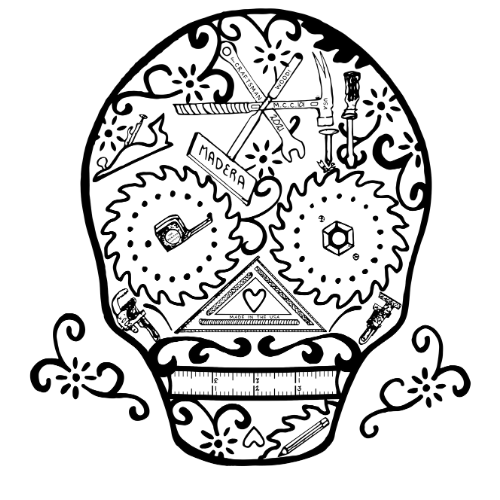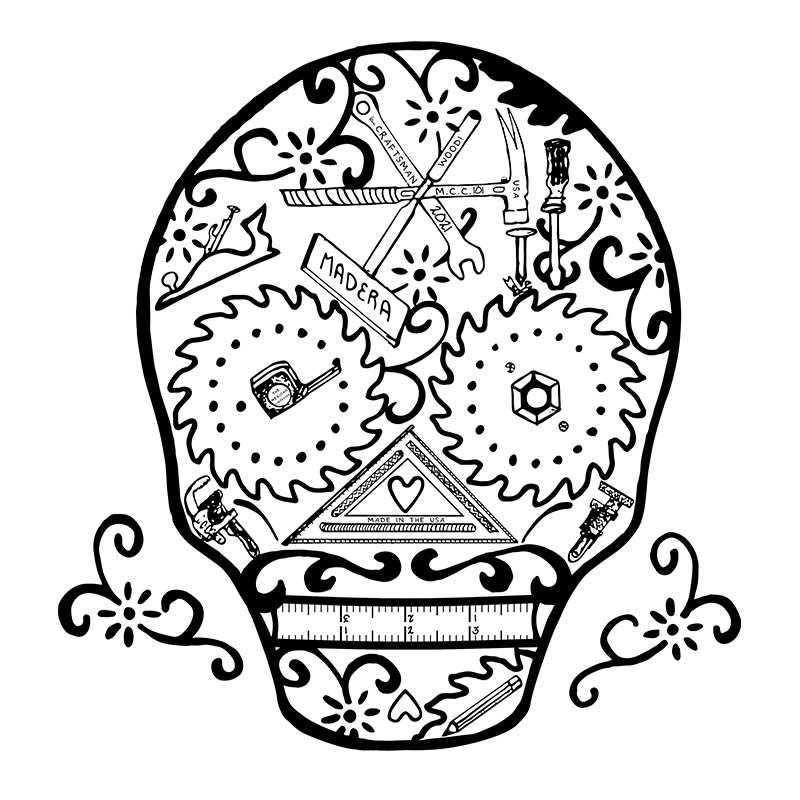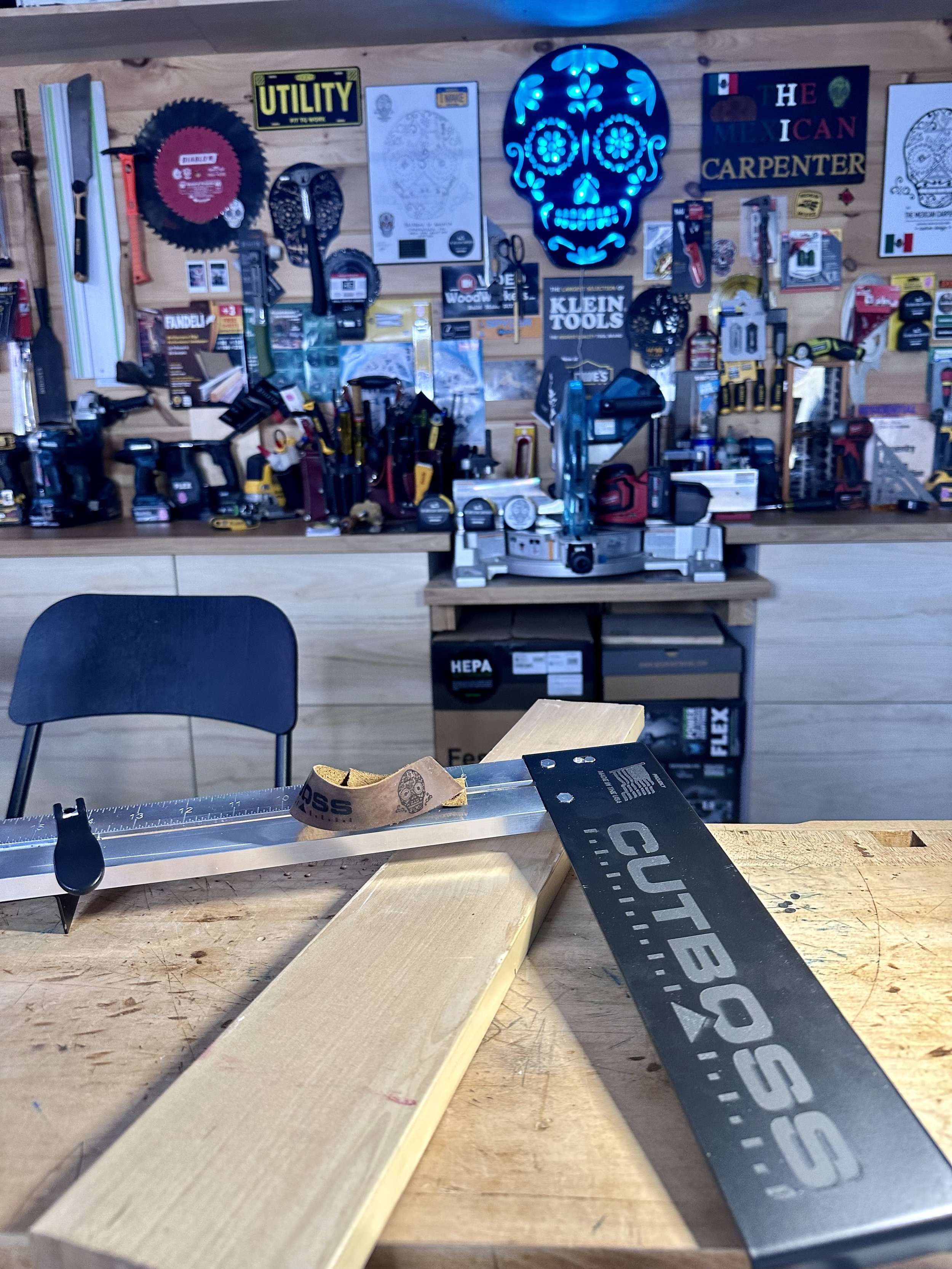Innovations in Framing Tools
Equipment Transforming Stick Framing Workflows
Every day the tool market gets saturated with more and more tools, some of them not too practical and some of them truly pioneering a new way to do things. When It comes to new framing tools the tools that stand out to me the most don’t just look cooler or cost more, its about how the tool directly improves the quality and efficiency of my daily work flow. In this blog I want to showcase some new groundbreaking technology as well as some innovative improvements made to classic tools that have gotten quite a few upgrades over the years.
CUTT BOSS Original
The CutBoss is the go-to tool for framers and carpenters seeking efficient, precise cuts for repetitive block sizes.
Eliminates the need for manual measuring and squaring
Exceptional at cutting 2x4s, 2x12s, floor joist blocking, and more.
Cuts block sizes ranging from 6"- 36"
Comes standard with rubber grip handle
Boost productivity for the Pro and DIYer alike, while maximizing lumber use and saving time.
STSQ7-L
7" Carpenter Square with Level
Where to Buy
The STILETTO® 7” Carpenter Square with Level is designed with more layout notches to help build and level faster. Additional notches aid in laying out 2'x6' material, ripping boards, and marking rafter pitches. The BOMBER™ Cutout allows for repeatable stud measurements, while the bottom heel markings provide marking versatility. The 7” Carpenter Square with Level also features a replaceable 180° vial. This square is fully machined, with an anti-glare finish and the most durable coating.
BOMBER™ Cutout for Faster Layouts – Repeatable Stud Measurements for 1 ½, 3, 4 ½, and LVL
Most Durable Coating – Anti-Glare, Hard Coat Anodized Finish Extends Life of Laser Etched Markings
Fully Machined for Superior Accuracy
180° Vial Visibility
Bottom Heel Markings
Scribe Notches Every 1/8”
Highly Visible Laser Etched Markings
5-1/2” Notch for Laying out 2'x6' Material
Use BOMBER™ to Layout Longer Lines when Ripping Boards – ½”, ¾”, 1 ¾”
Notches at Most Common Rafter Pitches
1-Piece Heel Assembly with Replaceable Vial
Made in USA with Global Materials
1 Year Warranty
Martinez Framing Square
Whatever it is, the way you tell your story online can make all the difference.
Squi jig
Used for: stair gauges, stair layout, rafter layout, rip guide on your saw, angle guide on your speed square, and more!
The taller profile gives an extremely solid and accurate hold on the workpiece.
The slot is 5/16+" tall, fitting onto anything up to .32" (5/16") thick
Paslode Tetra grip siding nail gun
Our Pneumatic tetraGRIP 0 Degree Coil Siding Nailer is a component of the tetraGRIP siding system. This system eradicates the need to nail into studs during siding applications, enabling the 20% faster installation of fiber cement siding, on average. It has a weight of merely 4.9lbs and securely attaches fiber cement siding directly to sheathing. It's essential to use this nailer solely with tetraGRIP Studless Siding Fasteners. Paslode pneumatic nailers ensure dependable performance, saving time and requiring less maintenance.
Faster Installation: Traditional methods of nailing hardcover siding to studs can be time-consuming. With a nail gun designed for direct sheathing attachment, the process is significantly faster as it eliminates the need to locate and nail into studs.
Improved Stability: Attaching siding directly to sheathing with specialized nails ensures a more stable and secure installation. This method distributes the load evenly across the sheathing, reducing the chances of siding becoming loose or warping over time.
Enhanced Aesthetics: Nailing directly to sheathing can result in a smoother and more uniform appearance. This method often avoids the visible stud lines that can sometimes appear when siding is nailed directly to studs.
Reduced Labor: The efficiency gained by eliminating the need to hit studs reduces the physical effort required from laborers, potentially lowering the overall labor costs of the siding installation.
Versatility in Installation: Using a nail gun that can drive nails directly into sheathing allows for more flexibility in the positioning of siding panels. Installers have more freedom to position the siding for the best aesthetic outcome without being constrained by stud locations.
Increased Weather Resistance: By securing siding directly to sheathing, there can be improved weatherproofing. The absence of gaps between studs minimizes the chances of moisture penetration and enhances the overall weather resistance of the siding installation.
Minimized Structural Damage: Nailing directly into sheathing reduces the risk of compromising the structural integrity of the building by avoiding unnecessary puncturing or weakening of load-bearing studs.
Streamlined Workflow: The use of a nail gun with specialized nails streamlines the construction process, allowing for a more organized workflow and potentially faster project completion times.
BIM(BUILDING INFORMATION MODELING)
As the demand for bigger buildings to be built faster increases there are a number of tools that have evolved over the century BIM being one of them.
Building Information Modeling (BIM) software has revolutionized the construction industry by streamlining collaboration, improving efficiency, and enhancing project management compared to older design systems.
In the past, collaboration among builders, architects, engineers, and tradespeople relied on 2D drawings or isolated 3D models that didn’t provide a holistic view of the project. This often led to misinterpretations, errors, and inefficiencies in communication and coordination.
However, BIM software offers a comprehensive digital representation of a building's physical and functional characteristics. It allows professionals to create and manage detailed 3D models that contain information beyond just geometry. Here's how it benefits modern builders and tradespeople:
Holistic Project Visualization: BIM enables a 3D visualization of the entire project, giving stakeholders a comprehensive view of the structure, systems, and components. This clear visualization reduces misunderstandings and facilitates better decision-making.
Enhanced Collaboration: Unlike older design systems, BIM fosters real-time collaboration and communication among various stakeholders. Architects, engineers, builders, and tradespeople can work concurrently on the same model, making changes visible to everyone instantly.
Integrated Information: BIM incorporates various data types within the model, including cost estimates, material specifications, construction schedules, and even energy analysis. This integrated information provides a more accurate and detailed overview of the project.
Clash Detection and Coordination: BIM software enables clash detection, identifying potential conflicts or clashes between different building systems (such as plumbing, electrical, and structural) early in the design phase. This helps prevent costly errors during construction.
Efficient Design Changes: With BIM, making design alterations is more efficient. Changes made in one part of the model are automatically updated throughout the entire project, ensuring consistency and accuracy.
Improved Planning and Analysis: Builders and tradespeople can use BIM for better project planning, analyzing construction sequences, and simulating construction processes before physically starting the work. This leads to optimized construction methods and timelines.
Increased Efficiency and Cost Savings: BIM's ability to detect clashes, optimize designs, and improve coordination reduces rework and change orders, ultimately saving time and money.
In essence, BIM software has transformed the construction industry by offering a collaborative platform that integrates information, enhances communication, reduces errors, and improves overall project efficiency compared to the limitations of older design systems.
In conclusion there is no limit to the innovation that can be inspired in the construction industry, we love to test out every new tool in the market that pertains directly to the work we do, being the voice of the end use allows us to help make improvements along side the industry innovators and enact change in our day to day work system by adding improved tools to our arsenal.








